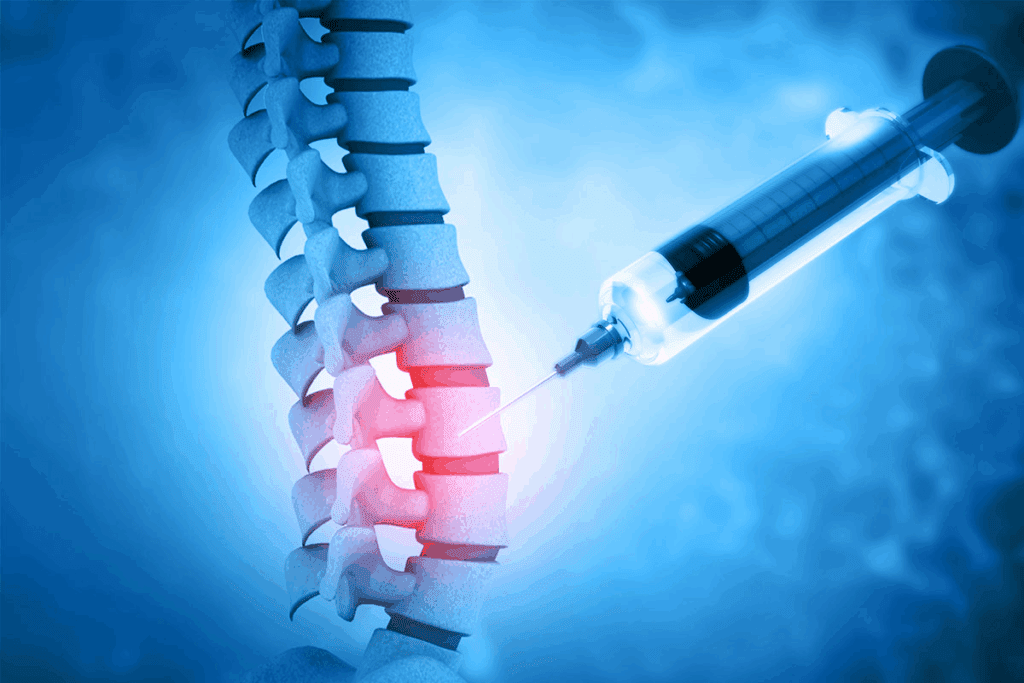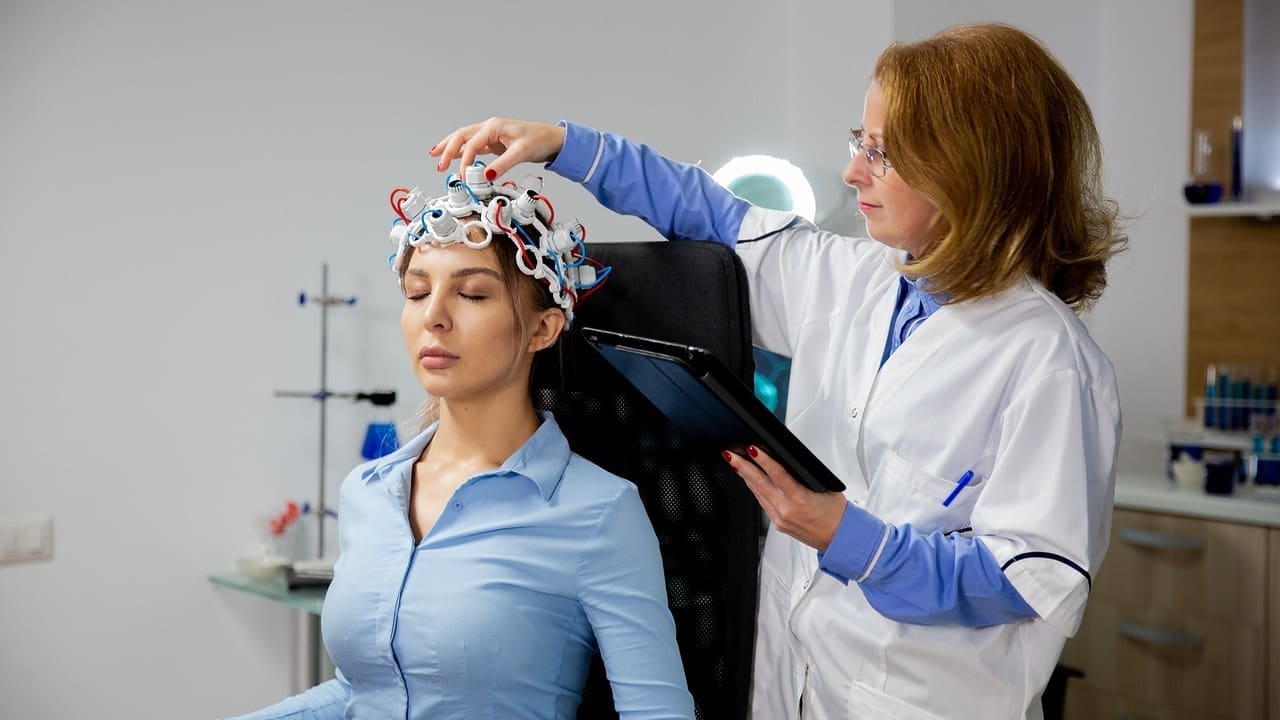Last Updated on November 26, 2025 by Bilal Hasdemir

At Liv Hospital, we know how tough chronic lower back pain can be. Lumbar facet injections are a key treatment for those who keep feeling pain, even after trying other methods.
These injections put medicine right into the facet joints. This helps a lot with pain and can figure out where the pain is coming from. We help patients understand the facet injections procedure so they can make good choices about their health.
Key Takeaways
- Understand the purpose and benefits of lumbar facet injections for chronic lower back pain.
- Learn about the step-by-step procedure for facet joint injections.
- Discover how facet injections can provide pain relief and aid in diagnosis.
- Explore the role of Liv Hospital in delivering quality care for patients undergoing facet injections.
- Gain insights into the expertise and support provided throughout the treatment process.
Patient Selection and Evaluation for Lumbar Facet Injection

The success of lumbar facet injections depends on choosing the right patients. We look for those who will likely get better from this treatment. This means placing a needle into the joint or near nerves under X-ray guidance.
Clinical Indicators for Facet Joint Intervention
Knowing who should get lumbar facet injections is key. We look for chronic low back pain, worse with certain movements, and relief from past injections.
We check a patient’s medical history, symptoms, and treatments they’ve tried. Facet-mediated pain is a big clue. It shows pain patterns typical of facet joint issues.
| Clinical Indicator | Description |
| Chronic Low Back Pain | Persistent pain in the lower back region |
| Pain on Extension or Rotation | Pain exacerbated by specific movements |
| Previous Pain Relief | History of pain relief from previous facet injections |
Physical Examination Findings
Physical exams are vital for assessing patients. We check for tenderness, pain on touch, and limited movement. These signs point to facet joint pain.
Imaging Assessment
Imaging studies help confirm facet joint issues. MRI or CT scans show joint degeneration or other problems. This helps us see if the joints are causing pain.
By using clinical signs, physical exams, and imaging, we find the best candidates for lumbar facet injections. This ensures treatment is both targeted and effective.
Indications and Contraindications for Lumbar Facet Injection

It’s key to know when and when not to use lumbar facet injections. These injections help with pain from the facet joints. They’re good for those who haven’t gotten better with other treatments.
Primary Indications for Facet Joint Injections
These injections are for long-term back pain from the facet joints. We use them for patients who haven’t improved with other treatments like physical therapy or medicine.
- Chronic back pain with a suspected facet joint origin
- Failure to respond to conservative management
- Diagnostic purpose to determine if facet joints are the pain source
Choosing the right patients for lumbar facet joint injections helps them get the most benefit.
Absolute Contraindications
Some conditions make lumbar facet injections a bad idea. These include:
- Active infection, either localized or systemic
- Bleeding disorders or coagulopathy
- Known allergy to injectable materials, such as corticosteroids or contrast media
- Pregnancy, specially with fluoroscopy and contrast
We must check patients for these absolute contraindications to prevent problems.
Relative Contraindications
Some conditions might not be a total no-go, but we need to think carefully. These include:
- Diabetes, as corticosteroids can affect blood glucose levels
- Immunosuppression, due to the risk of infection or slow healing
- Psychological or psychiatric conditions that may affect pain perception or reporting
For these conditions, we might choose other treatments or adjust our facet injections lumbar plan.
Pre-Procedure Planning and Preparation for Lumbar Facet Injection
Planning and preparation are key before a lumbar facet injection. Making sure all steps are taken before the procedure is important. It ensures success and keeps the patient safe.
Required Documentation and Consent
We must get informed consent from the patient before a facet block procedure. This means explaining the procedure, its benefits, risks, and alternatives. We also document the patient’s medical history, including allergies or reactions to certain drugs used in facet injections back procedures.
Laboratory Testing
Laboratory tests are a big part of pre-procedure planning for a facet joint block. We usually need a complete blood count (CBC) to check for infection or bleeding disorders. Coagulation studies might also be needed, depending on the patient’s anticoagulant therapy.
Medication Management
Managing medications is a critical part of pre-procedure preparation. We review the patient’s current medications and adjust them as needed. This might include stopping anticoagulants to reduce bleeding risk. We work with the patient and their primary care physician to manage medications effectively.
Patient Instructions
Clear instructions are vital for a smooth lumbar facet block procedure. We tell patients how to prepare, including fasting, medication adjustments, and what to expect during and after. We also provide post-procedure instructions, covering side effects and follow-up care.
Equipment and Medication Requirements for Lumbar Facet Injection
To do a lumbar facet injection right, you need the right tools and medicines. The success of the procedure depends on these. They must be of high quality and chosen wisely.
Procedural Equipment and Supplies
For lumbar facet injections, you need fluoroscopic imaging to guide the needle. Also, you need sterile supplies to keep everything clean.
- Sterile gloves and drapes
- Local anesthetic (e.g., lidocaine)
- Needles (spinal needles, typically 22-gauge)
- Syringes for injecting medication
Fluoroscopic imaging is key for seeing the facet joints. It helps place the needle right. We use contrast media to make sure the needle is in the right spot.
Medications and Injectates
The medicines for lumbar facet injections are local anesthetics and corticosteroids. The local anesthetic gives quick pain relief. The corticosteroid helps reduce swelling.
| Medication Type | Example | Purpose |
| Local Anesthetic | Lidocaine | Immediate pain relief |
| Corticosteroid | Triamcinolone | Reduce inflammation |
Contrast Media
Contrast media help us see if the needle is in the right place under fluoroscopy. This is very important for the injection to be accurate.
Emergency Equipment
Even though it’s rare, things can go wrong during lumbar facet injections. So, we need to have emergency gear ready. This includes:
- Oxygen supply
- Resuscitation equipment
- Emergency medications (e.g., epinephrine)
Having the right tools and medicines is key for safe and effective lumbar facet injections. We must make sure we have everything we need before starting.
Patient Positioning and Room Setup for Lumbar Facet Injection
To make sure a lumbar facet injection goes well, setting up the room and positioning the patient are key. Getting everything ready right is important for the success of the procedure and the comfort of the patient.
Optimal Patient Positioning
Positioning the patient right means putting them in a comfy spot for easy access to the facet joints. Usually, they lie prone on a fluoroscopy table. A pillow or bolster under their abdomen helps flex the lumbar spine, making it easier to reach the target area.
- Make sure the patient is comfy to avoid moving during the procedure.
- Use the right padding to support the patient’s body and keep them in the right spot.
- Adjust the fluoroscopy table to a good height for the practitioner.
Fluoroscopy Setup
Fluoroscopy is key for lumbar facet injections, letting us see in real-time where the needle is going. We set up the fluoroscopy unit to get a clear view of the facet joint. Guidelines say using fluoroscopy right is vital for the procedure’s accuracy.
- Adjust the fluoroscopy unit to get the best view of the facet joint.
- Use oblique views to see the target joint clearly.
- Make sure the image is sharp and centered on the screen before starting.
Sterile Field Preparation
Getting the sterile field ready is important to avoid infection during the procedure. We stick to strict sterile technique guidelines to make sure the area is ready.
Sterile Field Preparation Steps:
- Clean the skin with an antiseptic solution.
- Drape the area around the injection site with sterile drapes.
- Make sure all equipment and supplies are sterile and easy to reach.
By carefully positioning the patient, setting up fluoroscopy, and preparing a sterile field, we can make sure the lumbar facet injection procedure is safe and effective. These steps are vital for the best results and to avoid complications.
Performing the Lumbar Facet Injection Procedure
To do a lumbar facet injection right, doctors must take careful steps. They use a special X-ray to guide the needle. They also check the needle’s position with contrast to make sure it’s in the right spot.
Initial Fluoroscopic Imaging
The first thing is to get X-ray images. These images help doctors see the facet joint clearly. They make sure the needle goes in the right place.
Skin Entry Point Identification
After finding the joint, doctors pick the best spot to put the needle in. They use the X-ray to line up the needle. Then, they mark the spot and clean it with antiseptic.
Needle Advancement Technique
With the spot picked, doctors slowly move the needle. They watch it on the X-ray to make sure it’s going the right way. “The needle advancement technique requires precision to avoid complications,” experts say.
Contrast Injection and Verification
Once the needle is in, doctors inject contrast to check the position. They watch how the contrast spreads on the X-ray. This makes sure the injection will work.
By following these steps, doctors can do a successful lumbar facet injection. Using X-rays, precise needle placement, and checking with contrast are key. This method works for l4 l5 facet injections and other areas, with some adjustments for each patient.
Specific Techniques for Different Lumbar Levels
Different parts of the lumbar spine need different techniques for facet joint injections. The anatomy of the lumbar spine is complex. The approach can change based on the level being targeted. We will look at the details of facet joint injections at various lumbar levels, including L4-L5.
L4-L5 Facet Joint Injection Technique
The L4-L5 area is a common pain spot in the lumbar spine. It’s important to find the right entry point and angle the needle correctly to avoid problems.
- Position the patient prone on the fluoroscopy table.
- Use fluoroscopic guidance to identify the L4-L5 facet joint.
- Mark the skin entry point and prepare the area sterilely.
- Advance the needle under fluoroscopic guidance until it reaches the facet joint.
- Confirm the needle’s position with contrast injection before delivering the therapeutic agent.
L3-L4 and L5-S1 Considerations
While L4-L5 facet joint injections have a standard technique, other levels like L3-L4 and L5-S1 might need adjustments. For example, the L5-S1 level has a more oblique orientation. This might require a different needle path.
- Carefully assess the fluoroscopic images to determine the optimal needle path.
- Be prepared to adjust the needle angle and depth based on the patient’s anatomy.
- Use contrast media to confirm the correct placement of the needle within the facet joint.
Medial Branch Block Approach
The medial branch block is another way to treat facet joint pain. It involves injecting local anesthetic or steroid around the medial branches that innervate the facet joints.
“The medial branch block is a valuable tool in the diagnosis and management of facet joint pain, providing a more targeted approach than traditional facet joint injections.” – Interventional Pain Specialist
Adapting Technique for Anatomical Variations
Anatomical variations in the lumbar spine are common. It’s important to adjust the injection technique for success. Factors like facet joint orientation, size, and the presence of osteophytes can affect the approach.
- Carefully review pre-procedure imaging studies.
- Be prepared to adjust the technique based on fluoroscopic findings during the procedure.
- Consider using additional imaging planes to better visualize the target area.
Post-Procedure Care and Monitoring
We focus on post-procedure care and monitoring to keep patients safe after lumbar facet injections. Good care during this time is key to avoid problems and get the best results.
Immediate Recovery Monitoring
Right after the procedure, patients are watched closely in a recovery area. They are checked for any bad reactions or issues. Close supervision is important to handle any problems quickly.
Discharge Criteria
Before leaving, patients must meet certain criteria. They need stable vital signs, to be able to walk, and not too much pain. Meeting these criteria shows they are ready to go home safely.
Patient Instructions
When patients go home, they get clear instructions on how to care for themselves. This includes managing side effects, wound care, and when to come back for more checks. Clear communication is key to keep patients safe and following the right steps.
Activity Recommendations
Patients are told what activities to avoid after the procedure. They are advised to start slowly and follow their doctor’s advice. This helps them get the most benefit from the lumbar facet injection.
Conclusion
We’ve shown you how to do a lumbar facet injection for chronic lower back pain. This treatment works well if done right. It needs the right patient, careful steps, and good care after.
Lumbar facet injections help with back pain. They need a deep understanding of when and how to use them. Doctors can make a big difference in a patient’s life by doing this right.
The process of facet injections is detailed. It includes planning, precise needle placement, and watching the patient after. Following these steps helps doctors give safe and effective treatments. This brings relief to those with long-lasting back pain.
FAQ
What is a lumbar facet injection?
A lumbar facet injection is a procedure. It delivers medication into the facet joints in the lower back. This helps relieve pain and find the pain’s source.
What are the primary indications for lumbar facet injections?
These injections are for chronic lower back pain. They help those who haven’t gotten better with other treatments. They also help find where the pain comes from.
What are the contraindications for lumbar facet injections?
You shouldn’t get these injections if you have an infection or bleeding problems. Certain medicines can also make the procedure risky.
How is a patient evaluated for a lumbar facet injection?
Doctors check you through several steps. They look at your symptoms, do a physical exam, and use imaging tests. This helps decide if you’re a good candidate.
What is the purpose of fluoroscopic imaging during a lumbar facet injection?
Fluoroscopy guides the needle to the right spot. It makes sure the medicine goes where it should. It also checks the needle’s position with contrast.
What are the specific techniques for different lumbar levels, such as L4-L5 facet joint injection?
Techniques change based on the level of the spine. Doctors consider the anatomy and use special approaches for each level.
What is involved in post-procedure care and monitoring after a lumbar facet injection?
After the procedure, you’ll be watched closely. You’ll follow certain rules to go home safely. You’ll also get advice on what activities to do.
What are the benefits of lumbar facet injections for chronic lower back pain?
These injections can greatly reduce pain. They also help figure out where the pain is coming from. This makes them a good choice for chronic pain.
How should a patient prepare for a lumbar facet injection procedure?
To prepare, you’ll need to do some paperwork and tests. You might need to manage your medicines. Follow the doctor’s instructions for a smooth procedure.
What equipment and medications are required for a lumbar facet injection?
You’ll need supplies, medicines, and contrast for the procedure. There should also be emergency gear. This ensures the procedure is safe and works well.
References
- Cohen, S. P., & Raja, S. N. (2020). The role of facet joints in chronic spinal pain and the effectiveness of percutaneous interventions. Current Pain and Headache Reports, *24*(5), 21. https://pubmed.ncbi.nlm.nih.gov/32206959/






